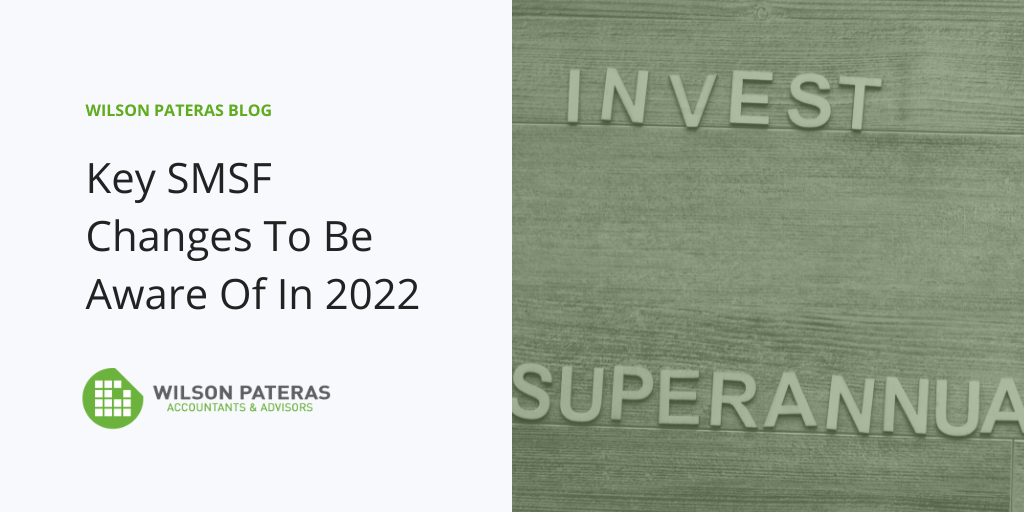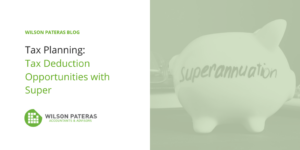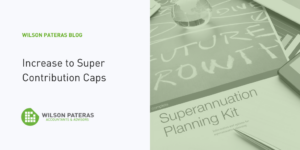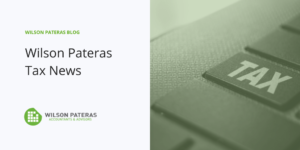
The tax and superannuation laws are always changing, and we are here to help you stay informed.
As a Trustee / Director of a Trustee Company for your Self Managed Superannuation Fund (SMSF), you need to be aware of key changes each year and opportunities and risk areas.
We have outlined the 2022 key areas below to assist you:
- Superannuation Guarantee Increases to 10.5%
- Cryptocurrency Gains
- Removal of the “Work Test”
- “Downsizer” Contributions from Age 60
- $450 Per Month Super Guarantee Threshold Removed
Please carefully consider this information and contact us if you have any questions
Superannuation Guarantee Increases to 10.5%
From 1 July 2022 the Superannuation Guarantee rate will increase from 10% to 10.5%. It is planned to increase by 0.5% each year until it reaches 12% on 1 July 2025.
If any SMSF members are paid on a “total remuneration” basis (a package inclusive of superannuation), this will mean that their take home pay will reduce by 0.5% unless the employer decides to increase their total remuneration by 0.5%.
For SMSF members who are paid wages or salary plus superannuation, then their take home pay will remain the same and the 0.5% increase will be added to their superannuation payments.
Cryptocurrency
The Australian Taxation Office (ATO) is concerned that many SMSF Trustees believe their cryptocurrency gains are tax free or only taxable when the holdings are cashed back into Australian dollars.
Gains from cryptocurrency are similar to gains from other investments, such as shares. Generally, as an investor, if your SMSF buys, sells, swaps for dollar currency, or exchanges one cryptocurrency for another, it will be subject to capital gains tax (CGT) and must be reported. CGT also applies to the disposal of non-fungible tokens (NFTs).
It is vital that your SMSF keeps good records of your cryptocurrency exchanges. The ATO has access to the data from crypto platforms and banks and is running data matching to ensure tax is paid on all crypto gains.
The tax laws are complex on this area – so please contact us to ensure you receive the right advice.
Removal of the “Work Test”
Currently, if you are aged 67 or over, to make a superannuation contribution the work test requires that you are employed for at least 40 hours over a 30 day period in the financial year.
Soon older Australians will no longer have to meet the work test to make superannuation contributions.
From 1 July 2022, members under 75 years of age will be able to make or receive personal contributions and salary sacrificed contributions without meeting the work test, subject to existing contribution cap limits. They may also be able use the bring forward rule.
Fund Trustees will no longer have to administer the work test at the time they accept the contribution.
Removing the requirement to meet the work test when making non-concessional or salary sacrifice contributions will simplify the rules governing superannuation contributions and increase flexibility for older Australians to save for their retirement through superannuation.
However, those aged 67 to 74 will need to meet the work test if they wish to claim a personal superannuation deduction for their contribution.
For those individuals there is no change to the way they lodge their notice of intent to claim or vary a personal super contribution deduction.
The only change is that now the ATO will be checking to see if they meet the work test at the time they lodge their income tax return.
“Downsizer Contributions from Age 60
If you have reached the eligible age, you may be able to contribute up to $300,000 from the proceeds of the sale (or part sale) of your home into your superannuation fund.
From 1 July 2022 the eligible age is 60 years old or older. Prior to this it is 65 years old or older.
Some of the eligibility criteria you must satisfy are:
- The home must be in Australia, have been owned by you or your spouse for at least 10 years and the disposal must be exempt or partially exempt from capital gains tax (CGT).
- You have not previously made a downsizer contribution to your super from the sale of another home or from the part sale of your home.
- Prior to (or at the same time) as making your contribution you must provide your fund with the ‘Downsizer contributions into super form’.
$450 Per Month Super Guarantee Threshold Removed
As part of the 2021/2022 federal Budget, the Australian Government announced it will remove the $450 per month threshold to expand coverage of super guarantee to eligible employees regardless of their monthly pay.
From 1 July 2022, employers will be required to make super guarantee contributions to their eligible employee’s super fund regardless of how much the employee is paid. Employees must still satisfy other super guarantee eligibility requirements.
For employees under the age of 18, super guarantee is only required if the employee works more than 30 hours per week.
Employers will need to check their payroll and accounting systems have been updated for super payments made after 1 July 2022 to ensure they correctly calculate their employee’s super guarantee entitlement.
Should You Review Your Investment Strategy?
Your investment strategy is your plan for making, holding and realising assets consistent with your investment objectives and retirement goals. It should set out why and how you have chosen to invest your retirement benefits in order to meet these goals.
The superannuation laws require that you must prepare and implement an investment strategy for your self-managed super fund (SMSF) which you must then give effect to and review regularly.
Your investment strategy should not be a “set and forget” document. You should review your strategy regularly to ensure it continues to meet the current and future needs of your members depending on their personal circumstances.
Certain significant events should also prompt you to review your strategy, such as:
- a market correction
- when a new member joins the fund or departs a fund
- when a member commences receiving a pension. This is to ensure the fund has sufficient liquid assets and cash flow to meet minimum pension payments prior to 30 June each year.
You should also review your strategy at least annually and document that you have undertaken this review and any decisions made arising from the review. For example, you could do this as part of the annual trustee meeting minutes. You should then provide these minutes or other evidence of a review to your auditor. This will show that you’ve met the requirement to review regularly and, where necessary, revised your investment strategy.
Reviewing Insurance Inside your SMSF
SMSF trustees need to consider the need for insurance cover for the fund members when creating and reviewing the fund’s investment strategy.
Please contact us if you need assistance in calculating appropriate insurance amounts for the members in your SMSF and how these insurances should be structured, and we can refer you to a licenced financial advisor who can assist you.





